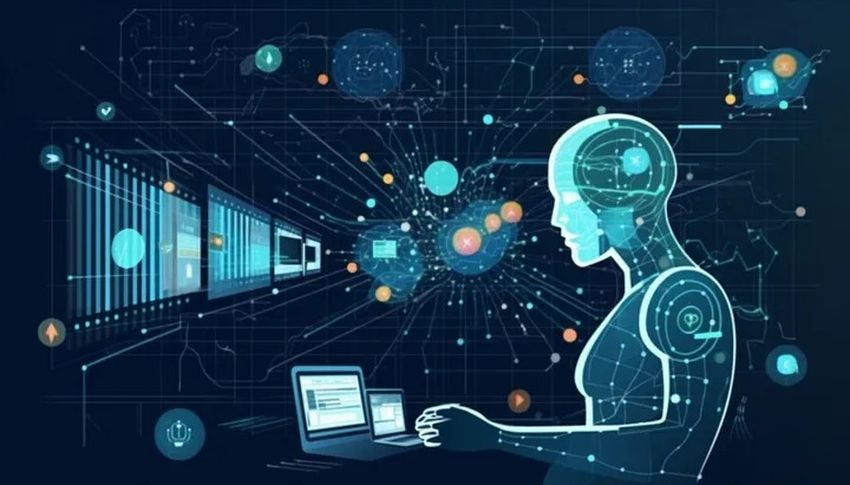In today’s digital world, data is the new oil. However, raw data on its own is not very useful. To extract its real value, organizations must turn it into actionable insights—this is where AI analytics comes into play. AI analytics leverages the power of artificial intelligence and machine learning to automate, enhance, and accelerate the process of analyzing large and complex datasets. Let’s dive into what AI analytics really is, how it works, and why it’s revolutionizing industries across the globe. 🌍
What is AI Analytics? 🤔📈
AI analytics is the use of artificial intelligence technologies—especially machine learning (ML) and natural language processing (NLP)—to process and analyze data. Unlike traditional analytics that often rely on human intervention and manual coding, AI analytics can automatically identify patterns, make predictions, and even recommend actions based on data.
It combines the following elements:
-
Big Data: Massive volumes of structured and unstructured data 📦
-
Machine Learning: Algorithms that learn from data without being explicitly programmed 🧠
-
Data Visualization: Graphs and dashboards that make complex information understandable 📊
-
Automation: The capability to operate with minimal human input 🤖
Why AI Analytics Matters 🧭
AI analytics is transforming how organizations approach decision-making. Here’s why it’s so impactful:
1. Speed and Efficiency ⚡
AI can process millions of data points in seconds—something that would take humans days or even weeks. This allows for real-time decision-making and rapid response to market changes.
2. Accuracy and Precision 🎯
AI systems can detect anomalies, predict future trends, and identify correlations that may be invisible to human analysts. This leads to more accurate insights and fewer mistakes.
3. Scalability 📈
Whether you’re analyzing data from one source or a thousand, AI analytics can scale with your business. It grows as your data grows.
4. Cost-Effective 💰
By automating repetitive tasks, AI analytics can reduce the cost of analysis and free up human analysts to focus on strategic thinking.
Key Components of AI Analytics 🧩
To fully understand how AI analytics functions, let’s break down its core components:
🔹 Data Collection
The journey starts with gathering data from different sources such as websites, CRM systems, social media platforms, IoT devices, and more.
🔹 Data Cleaning and Preprocessing 🧼
Raw data is often messy. AI tools clean it by removing duplicates, handling missing values, and standardizing formats.
🔹 Feature Engineering ⚙️
This involves selecting the most relevant variables (features) for analysis. AI can automate this process to improve model accuracy.
🔹 Model Training and Evaluation 📚
AI systems use historical data to train algorithms. The model’s performance is then tested using unseen data to ensure accuracy and reliability.
🔹 Deployment and Monitoring 🚀
Once trained, the model is deployed into production and continuously monitored for performance. It can adapt and retrain itself with new data.
Real-World Applications of AI Analytics 🌐
AI analytics is not confined to labs or tech companies—it is already changing the way many industries operate.
🏥 Healthcare
-
Predicting disease outbreaks
-
Personalizing patient treatment plans
-
Optimizing hospital resource allocation
🛍 Retail
-
Forecasting demand
-
Personalizing marketing campaigns
-
Managing inventory more efficiently
📉 Finance
-
Detecting fraudulent transactions
-
Assessing credit risk
-
Portfolio management
🏭 Manufacturing
-
Predictive maintenance of machinery
-
Quality control using computer vision
-
Supply chain optimization
AI Analytics vs Traditional Analytics ⚖️
| Feature | Traditional Analytics 🧮 | AI Analytics 🤖 |
|---|---|---|
| Speed | Slower, manual processes | Real-time processing |
| Scalability | Limited | Highly scalable |
| Predictive Power | Low | High |
| Human Intervention | High | Minimal |
| Adaptability | Static | Dynamic, self-learning |
Future of AI Analytics 🔮
The future of AI analytics is incredibly promising. Here are some trends to watch:
-
Explainable AI (XAI): Making AI decisions more transparent and understandable for humans 🧠
-
Edge Analytics: Bringing AI closer to the source of data, like IoT devices 🌐
-
Automated Machine Learning (AutoML): Letting non-experts build and deploy AI models with ease ⚙️
-
Conversational Analytics: Using chatbots and voice assistants to interact with data using natural language 🗣️
Challenges to Consider ⚠️
While AI analytics is powerful, it’s not without challenges:
-
Data Privacy Concerns 🔐
Organizations must ensure compliance with data protection laws like GDPR and HIPAA. -
Bias in AI Models ⚖️
AI can inherit biases from training data, leading to unfair or inaccurate results. -
Talent Gap 🧑💻
There’s a shortage of professionals skilled in both AI and data analytics. -
Integration with Legacy Systems 🔧
Many companies still use outdated systems that don’t integrate well with modern AI solutions.
Conclusion: Turning Data into Gold with AI Analytics 🌟📉
AI analytics is not just a buzzword—it’s a transformative technology that is reshaping industries, enhancing decision-making, and unlocking the full potential of data. By integrating AI into the analytics workflow, businesses can move from simply understanding the past to predicting the future and making smarter choices.
Recommended Reads:
Real-World Example: How Amazon Uses AI Analytics to Power Its Business


